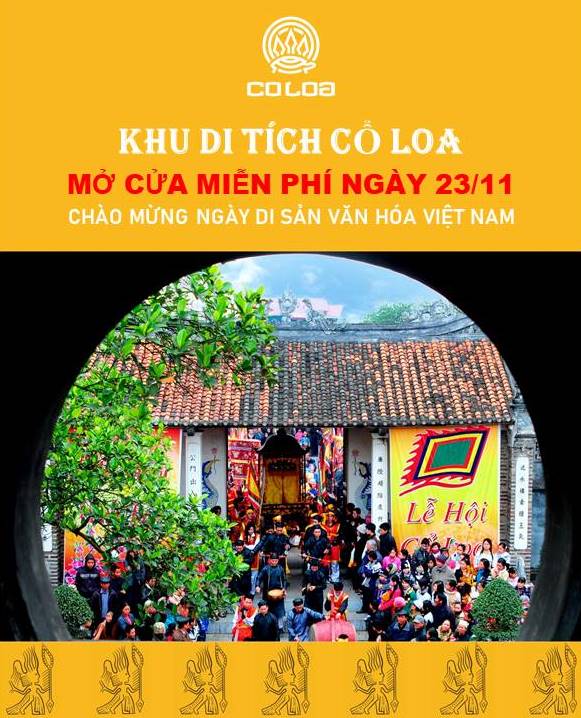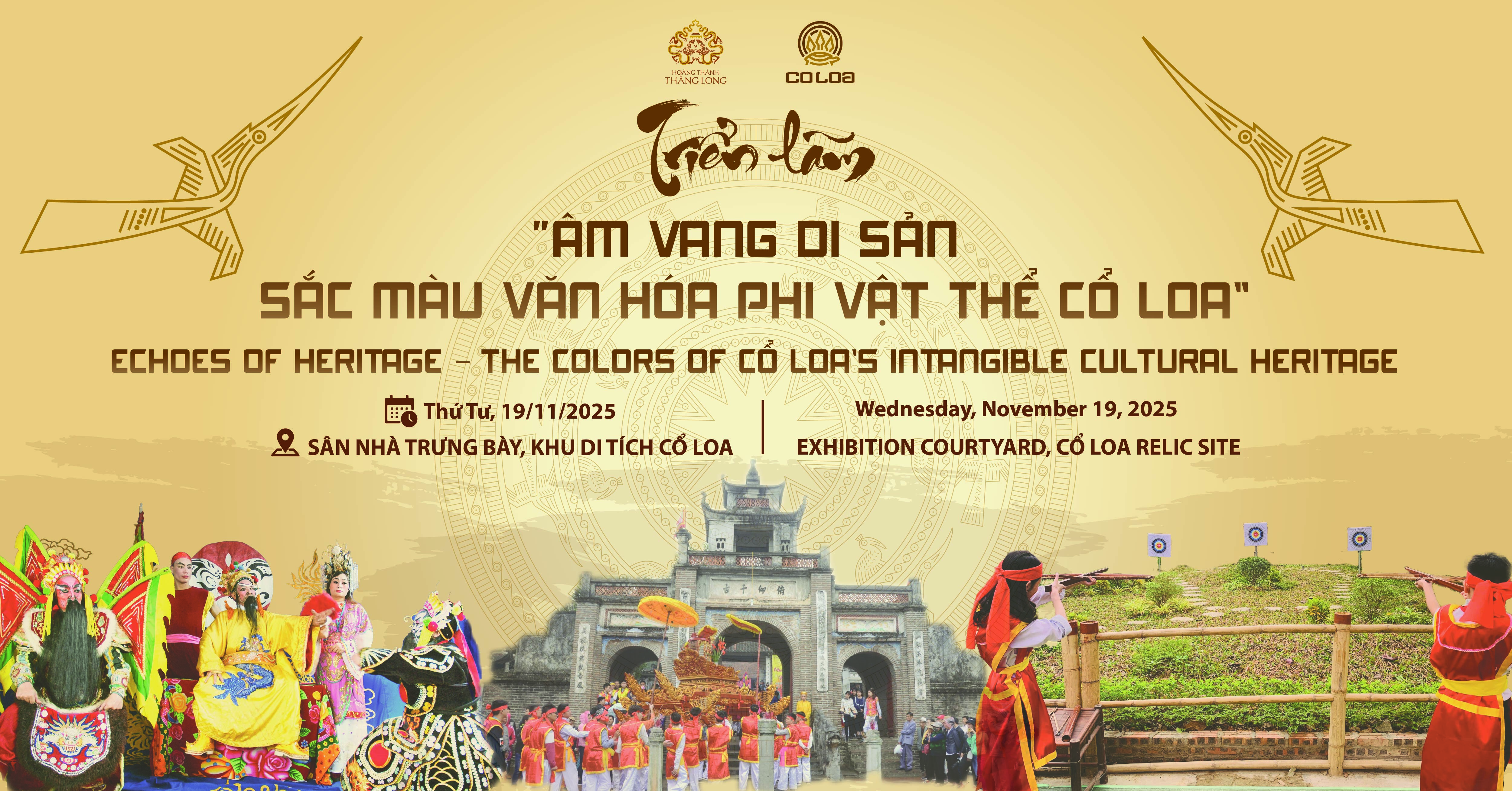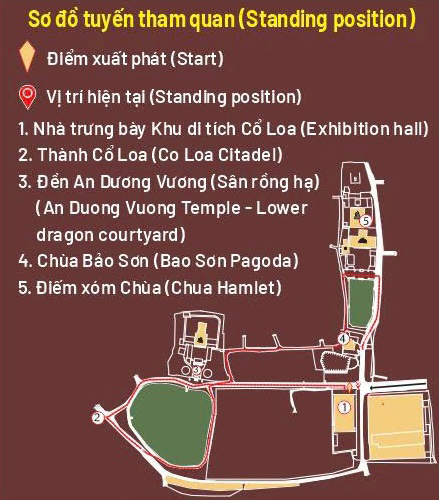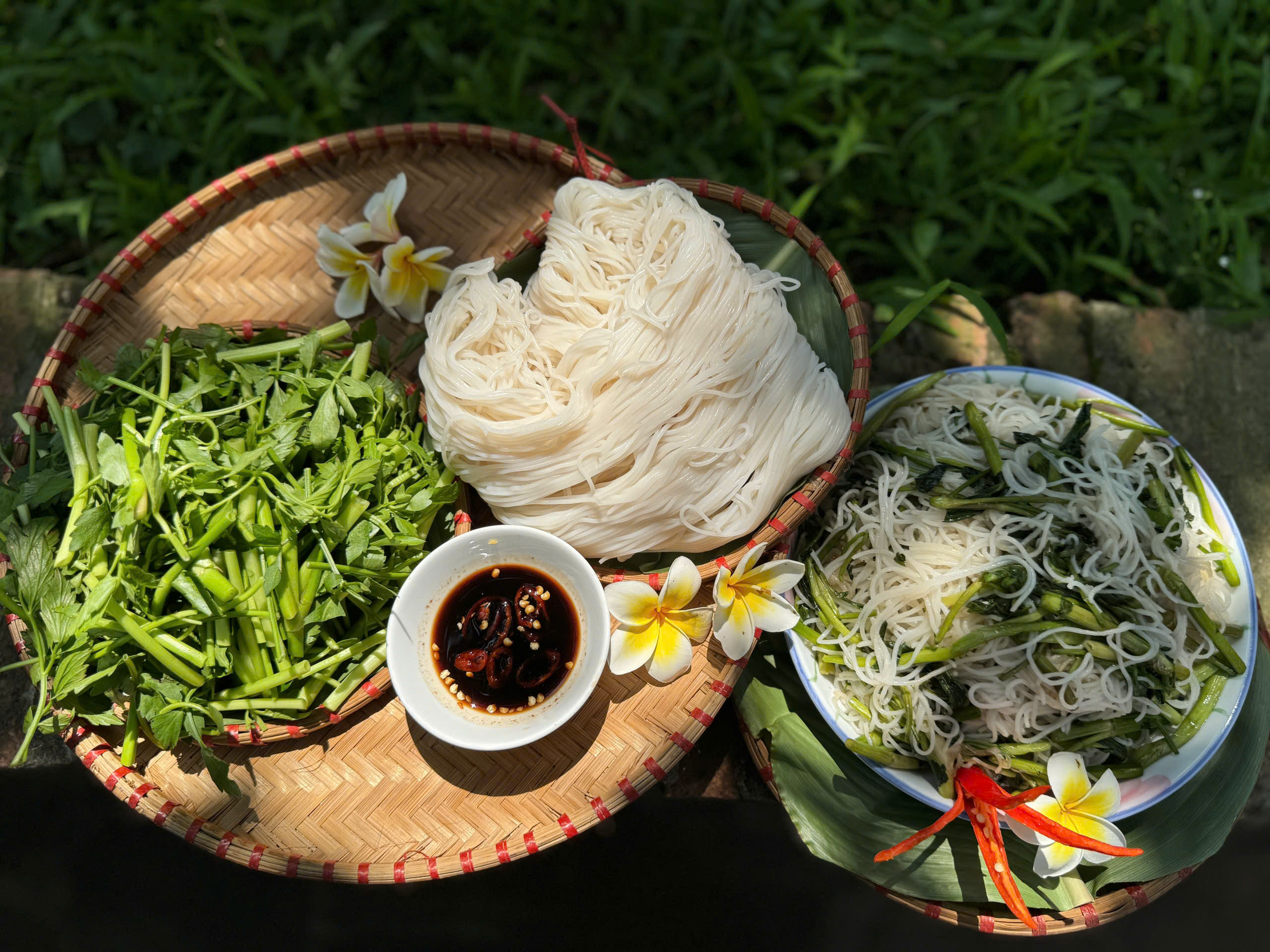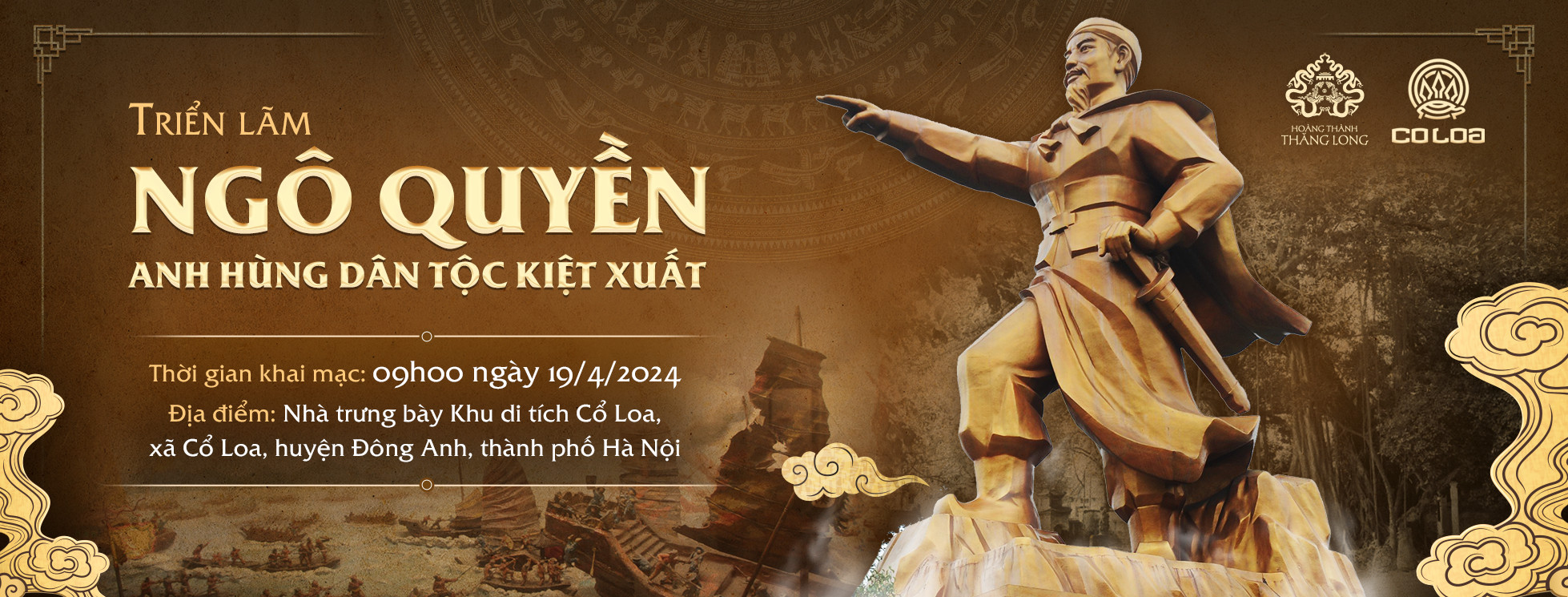
On the occasion of the 1085th anniversary of Ngô Quyền proclaimed himself King and located the capital at Cổ Loa (939 - 2024), the Thăng Long - Hanoi Heritage Conservation Center and the Management Department of Cổ Loa Vestige Sites organized the exhibition "Ngô Quyền – Outstanding National Hero”.
1. Noble of the Đường Lâm village
Old history records that Ngô Quyền came from a noble and powerful family in Giao Châu. Đại Việt sử ký toàn thư (1697) (The Complete History of Đại Việt) records: "Ngô King: reigned for 6 years, lived 47 years (898-944). The king was talented at planning and fighting, who restored the country, gaining independence from China and was crowned King. His family name is Ngô, first name is Quyền, who comes from Đường Lâm Village, having a long history of nobility. His father is Ngô Mân, who worked as Châu mục (a govenor of one region in Đại Việt).
“Đại Việt sử ký tiền biên” (1800) also says that: "Ngô King: His family name is Ngô, first name is Quyền, who comes from Đường Lâm Village, having a long history of nobility. His father is Ngô Mân, who worked as Châu mục (a govenor of one region in Đại Việt). When the King was born, there was strange light that filled of his house. His appearance was abnormal, having three moles on his back. The astrologer thought it was strange and said he could master a direction, so he was named Quyền. When he grew up, he had a handsome appearance, eyes as bright as lightning, amble like a tiger, had courage, and had the strength to hold a cauldron..."
“Khâm định Việt sử thông giám cương mục” (1856-1884) records again show that: “Ngô Quyền, lived in Đường Lâm village, having a long history of nobility, his father is Ngô Mân, who worked as Châu mục (a govenor of one region in Đại Việt).
Thus, old histories show that Ngô Quyền was born into a family with a patriotic tradition, fighting against the Northern invaders.
The statue of Emperor Ngô Quyền at Bạch Đằng Giang site, Thủy Nguyên district, Hải Phòng.
2. Bạch Đằng Waves
In the year of Đinh Dậu (937), Dương Đình Nghệ was assassinated by Kiều Công Tiễn, a military officer who usurped the position of “Tiết độ sứ”. Dương Đình Nghệ's son in law and also his general, Ngô Quyền, who was currently in Ái Châu, mobilized his army to overthrow the traitor. Faced with the hatred and resistance of the country's army and people, Kiều Công Tiễn fell into a weak position and begged for help from the King of Southern Han. Anticipating the enemy's intentions of "internal and external attack", Ngô Quyền quickly gathered forces to fight internal and external enemies. In October 938, he marched his army to surround Đại La citadel, destroying Kiều Công Tiễn, crushed his remaining forces, and stopping the Southern Han Dynasty's plot to use internal influence. Next, he gathered all ethnic forces, calling on the people of the whole country, especially the militia of villages in the Northeast, to join the fight. In addition, he took advantage of the dangerous mountains, forests, and rivers in the Bạch Đằng estuary to secretly arrange an ambush, with underground stakes placed in the riverbed and positioned troops on both sides of the river, ready to ambush the enemy.
At the end of December 938, the Southern Han fleet led by Hoằng Tháo (Liu Hongcao) from Guangdong (China) crossed the sea, through the Đông Kênh, Vĩnh An province, and entered Hạ Long Bay. When the tide rose, Ngô Quyền's navy came out to challenge, then pretended to lose. Hoằng Tháo urged his troops to chase him, but they fell into the ambush area that Ngô Quyền had set up. When the tide fell, Ngô Quyền’s navy from ambush positions to suddenly rush out to block the enemy's ships formation and flank them on both sides. The Southern Han troops were suddenly attacked, could not react in time and suffered great losses. Hoằng Tháo and his soldier were forced to turn around and flee, but fell into an underground battle of stakes trying to reach the sea. In a short time, the Southern Han’s fleet was sunk, most of the enemy troops were destroyed, and Hoằng Tháo was killed.
 The map of the battle of Bạch Đằng 938
The map of the battle of Bạch Đằng 938
3. Cổ Loa Citadel ushered in independence
After the victory, Ngô Quyền set up the capital in Loa Citadel (Cổ Loa Citadel, Đông Anh District, Hanoi) with the intention of continuing the cause of building the country of King Hùng and An Dương Vương, affirming his determination to maintain National independence that had just been won. He decided to quit the Northern feudal position of "Tiết độ sứ" and proclaimed himself king. “Đại Việt sử ký toàn thư” shows “1st year of Kỷ Hợi, (939), (…). In the spring, the king began to proclaim himself king, established Duong Thi as Queen, appointed many officials, and established court ceremonies and costumes. He resolutely cut off all dependent relationships with foreign countries, building a government based on the centralized monarchy model, a truly independent kingdom.
Ngô Quyền reigned for less than 6 years. In 944, he passed away at the age of 47. Although the cause of national construction is still unfinished, in general it can be seen that the Ngo dynasty "is an independent State of a country with full sovereignty, in terms of ideological consciousness as well as in practical activities” (Phan Huy Lê, 2011, Tìm về cội nguồn, Nxb. Thế giới, tr.700).
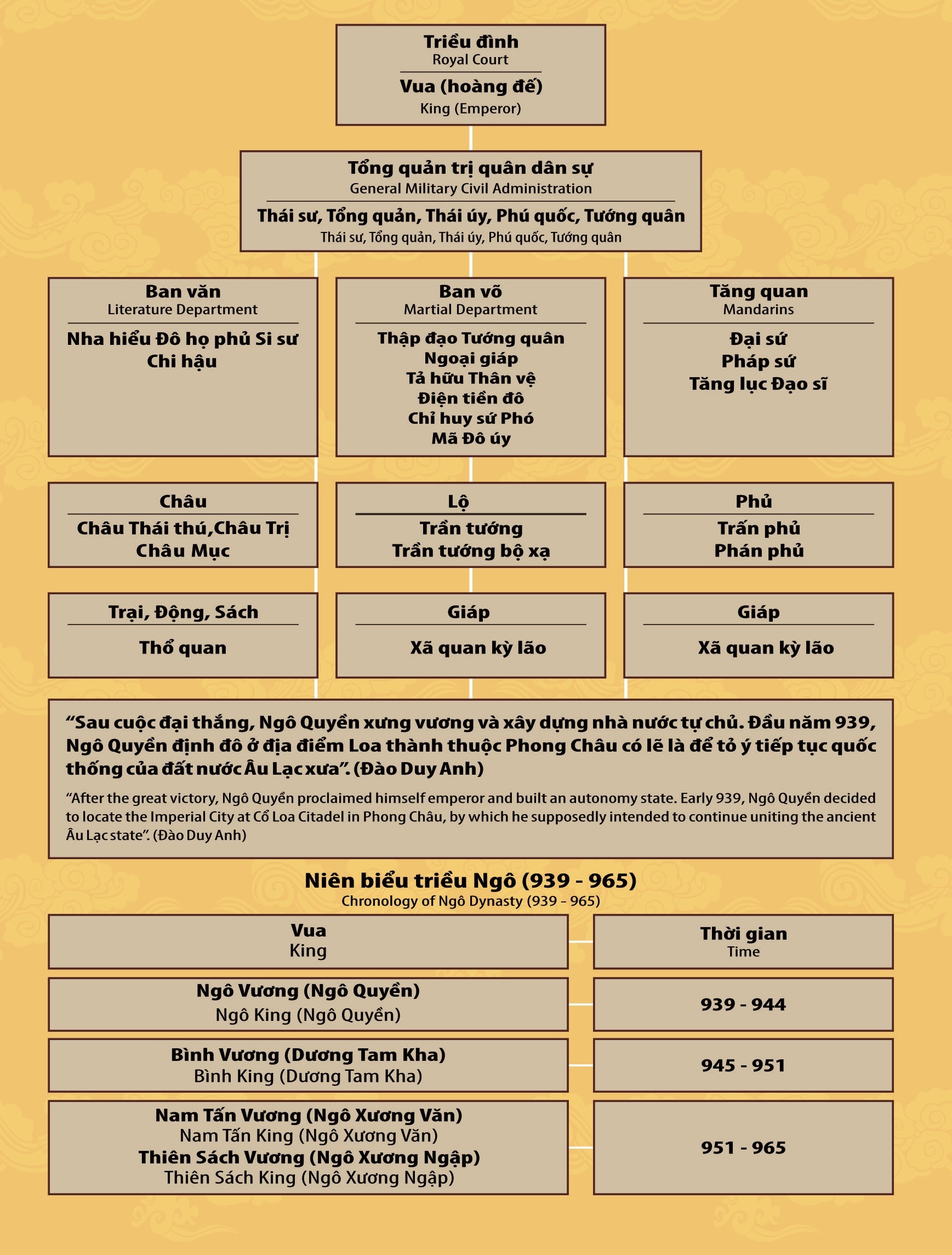 System of Ngô Dynasty (939-965)
System of Ngô Dynasty (939-965)
Lê Văn Hưu (1230-1322), historian, who laid the foundation for Đại Việt history during the Trần dynasty and was honored as the Father of Vietnamese history wrote: “Ngô King was able to take the newly assembled Vietnamese army and defeated a hundred thousand of Hoằng Tháo’s invaders, started the country and proclaimed himself a king, so that the Chinese enimies did not dare to come to Vietnam anymore. Ngô Quyền was a masterful tactician, proficient at defeating his enimies and most importantly, freed the Vietnamese people from Chinese rule. Although he just proclaimed himself a king, and was unable to ascend and change the year name, the orthodoxy of our country was restored”. Phan Bội Châu, honored Ngô Quyền as the "Ancestor of the national restoration".
The exhibition is open to visitors from April 19, 2024, at the exhibition house of Cổ Loa vestige site, Chùa hamlet, Cổ Loa commune, Đông Anh district, Hanoi.
MANAGEMENT DEPARTMENT OF CỔ LOA VESTIGE SITE

